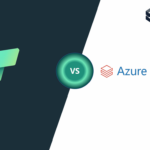In the cutthroat world of manufacturing, waste reduction is more than an environmental obligation—it’s a strategic necessity. With razor-thin profit margins and escalating global competition, manufacturers are perpetually on the hunt for ways to trim waste and bolster efficiency. However, pinpointing waste hotspots and executing effective reduction strategies can be a daunting task. This is where the power of modern analytics platforms like Databricks, Azure Cloud, and self-serve Business Intelligence (BI) tools come into play.
The Hurdles in Manufacturing Waste Reduction
Waste in manufacturing can manifest in various forms, from surplus raw materials and energy consumption to inefficient workflows and equipment downtime. The Lean Enterprise Research Centre reveals that a staggering 60% of production activities in a typical manufacturing operation are wasteful—they add zero value for the customer.
These inefficiencies can take a heavy toll on a company’s financial health. The U.S. Environmental Protection Agency estimates that U.S. companies shell out over $200 billion each year on waste management.
The Potential of Databricks, Azure Cloud, and Self-Serve BI
Modern analytics platforms like Databricks and Azure Cloud, coupled with self-serve BI tools, are transforming the way manufacturers tackle waste reduction.
Databricks, a cutting-edge analytics platform, empowers manufacturers to analyze vast data volumes in real-time, offering invaluable insights into their operations. This can aid in pinpointing waste areas, forecasting future trends, and fine-tuning processes for peak efficiency.
Azure Cloud, Microsoft’s robust enterprise cloud platform, provides a suite of services, including machine learning and artificial intelligence, that can be harnessed to automate and optimize waste reduction strategies.
Self-serve BI tools democratize data analysis, enabling non-technical users to generate insights and make data-driven decisions. This can dramatically accelerate the process of identifying and addressing waste areas.
SAP’s Contribution to Waste Reduction
SAP, a global leader in enterprise application software, plays a pivotal role in this process. SAP’s solutions integrate seamlessly with Databricks, Azure Cloud, and various self-serve BI tools, providing a unified platform for managing and analyzing data. This integration enables manufacturers to tap into the power of these advanced analytics platforms while maintaining a single source of truth for their data.
The Impact of Waste Reduction Analysis
The impact of waste reduction analysis can be substantial. According to a McKinsey report, manufacturers that utilize advanced analytics for waste reduction can slash their production costs by up to 20% and boost their productivity by up to 25%.
These benefits aren’t merely theoretical. Companies worldwide are already reaping the results. For instance, a leading automotive manufacturer employed Databricks, Azure Cloud, and self-serve BI tools to scrutinize their waste streams and implemented a waste reduction strategy that led to a 30% reduction in waste and a 15% surge in productivity.
Wrapping Up
In conclusion, waste reduction is a vital aspect of contemporary manufacturing, but it need not be a source of consternation. With the right tools, like Databricks, Azure Cloud, self-serve BI, and SAP, manufacturers can transform this challenge into an opportunity for optimization and efficiency. By leveraging these technologies, they can gain real-time insights, make data-driven decisions, and ultimately, maintain their competitive edge in the fast-paced world of manufacturing.
In the era of Industry 4.0, the future of manufacturing is rooted in digital transformation and data-driven decision making. And with Databricks, Azure Cloud, self-serve BI, and SAP, that future is already here.



